Pattern Formation outside of Equilibrium
Reviews of Modern Physics, 65 (3):
851--1112 (1993)DOI: 10.1103/RevModPhys.65.851
Abstract
A comprehensive review of spatiotemporal pattern formation in systems driven away from equilibrium is presented, with emphasis on comparisons between theory and quantitative experiments. Examples include patterns in hydrodynamic systems such as thermal convection in pure fluids and binary mixtures, Taylor-Couette flow, parametric-wave instabilities, as well as patterns in solidification fronts, nonlinear optics, oscillatory chemical reactions and excitable biological media. The theoretical starting point is usually a set of deterministic equations of motion, typically in the form of nonlinear partial differential equations. These are sometimes supplemented by stochastic terms representing thermal or instrumental noise, but for macroscopic systems and carefully designed experiments the stochastic forces are often negligible. An aim of theory is to describe solutions of the deterministic equations that are likely to be reached starting from typical initial conditions and to persist at long times. A unified description is developed, based on the linear instabilities of a homogeneous state, which leads naturally to a classification of patterns in terms of the characteristic wave vector q0 and frequency ω0 of the instability. Type Is systems (ω0=0, q0≠0) are stationary in time and periodic in space; type IIIo systems (ω0≠0, q0=0) are periodic in time and uniform in space; and type Io systems (ω0≠0, q0≠0) are periodic in both space and time. Near a continuous (or supercritical) instability, the dynamics may be accurately described via ämplitude equations," whose form is universal for each type of instability. The specifics of each system enter only through the nonuniversal coefficients. Far from the instability threshold a different universal description known as the "phase equation" may be derived, but it is restricted to slow distortions of an ideal pattern. For many systems appropriate starting equations are either not known or too complicated to analyze conveniently. It is thus useful to introduce phenomenological order-parameter models, which lead to the correct amplitude equations near threshold, and which may be solved analytically or numerically in the nonlinear regime away from the instability. The above theoretical methods are useful in analyzing "real pattern effects" such as the influence of external boundaries, or the formation and dynamics of defects in ideal structures. An important element in nonequilibrium systems is the appearance of deterministic chaos. A greal deal is known about systems with a small number of degrees of freedom displaying "temporal chaos," where the structure of the phase space can be analyzed in detail. For spatially extended systems with many degrees of freedom, on the other hand, one is dealing with spatiotemporal chaos and appropriate methods of analysis need to be developed. In addition to the general features of nonequilibrium pattern formation discussed above, detailed reviews of theoretical and experimental work on many specific systems are presented. These include Rayleigh-Bénard convection in a pure fluid, convection in binary-fluid mixtures, electrohydrodynamic convection in nematic liquid crystals, Taylor-Couette flow between rotating cylinders, parametric surface waves, patterns in certain open flow systems, oscillatory chemical reactions, static and dynamic patterns in biological media, crystallization fronts, and patterns in nonlinear optics. A concluding section summarizes what has and has not been accomplished, and attempts to assess the prospects for the future.(less)
Links and resources
Tags
community
@gdmcbain's tags highlighted
- 35q35-pdes-in-connection-with-fluid-mechanics
- 37-02-dynamical-systems-and-ergodic-theory-research-exposition
- 37c29-dynamical-systems-homoclinic-and-heteroclinic-orbits
- 37n10-dynamical-systems-in-fluid-mechanics-oceanography-fluid-mechanics
- 37n20-dynamical-systems-in-other-branches-of-physics
- 76e06-hydrodynamic-stability-convection
- usyd


